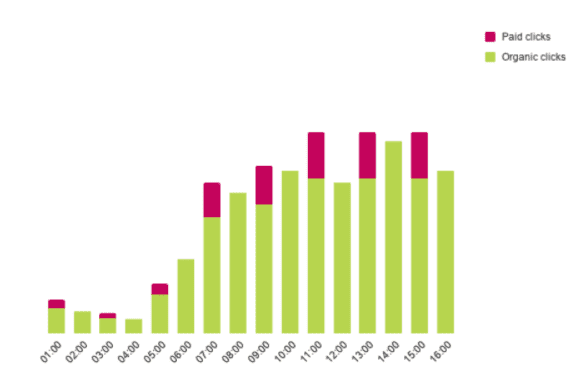Last week my colleague Dounia and I got the chance to attend the Hero Conf and SearchLove virtual summit, a two-day conference on PPC and SEO. This year, the conference kicked off with an interesting talk on the integration of those two, given by Will Critchlow. In my opinion, he shared some valuable insights that are simple, but at the same time often overlooked.
Parallels between the evolution of PPC and SEO
Even though PPC and SEO are two different channels, we do see similar trends transforming both. In SEO, for example, we’ve seen a shift from keywords to search intent. Similarly, marketers shifted from using manual bids and modifiers to using smart bidding strategies. Recently, we also learned about the removal of broad-match modified in Google Ads.
But those are not the only changes we have seen over the last few years. Whereas digital marketers used to have full access to search data in the past, the data becomes more and more limited nowadays. As a result, we are obliged to measure on a landing page level rather than on a keyword level.
Bidding on branded search queries or not?
A recurring discussion among digital marketers is the question of whether to run ads on branded search queries or not. The answer to this question will depend on multiple factors:
- Do you have a lot of competitors bidding on your brand name and/or combinations with your brand name?
- How well is your website ranking organically?
However, it might not always be this black and white. In that case, a technology that turns on and off your brand ads based on whether there are competitors bidding might be a solution.
Incrementality
Similarly, you could use technology to turn off generic ads for keywords for which you rank well organically. Before doing so though, it is important to understand the concept of incrementality.

Instead of measuring how many clicks you have by combining paid and organic clicks, you should measure the incremental clicks. In other words, how many clicks would you not have had without ads? This theory assumes that part of the users that would have clicked on the paid ad, transfer to organic clicks.
Transferability
The degree of transferability (= the percentage of paid traffic that transfers to organic traffic when you turn off your ads) will depend on a multitude of factors:
- Branded vs. generic search queries
- Organic positions: Identify using a rank tracker like STAT, SEMrush, …
- Rich snippets: Which rich snippets do your search results have? What about the competition?
- Search intent: As this article on search intent explains, this can go beyond the traditional navigational, informational, and transactional segmentation.
- What does the SERP look like? What features are there? Is there a featured snippet? News articles? Videos? Knowledge panel? Shopping ads? Local results? …
- Is there a lot of ad competition?
The trick is then to forecast this as well as possible. In order to do this, you will need to perform some tests. One way to do so is by switching on and off paid ads every other hour:

Once you have this transferability data, you can take it into account when deciding on which ad groups to turn off. Indeed, the higher the transferability, the lower the impact will be when you switch off the ads. Similarly, you can use this information to decide on bidding aggressivity.
We already knew that working on your website’s SEO helps improve your quality score in Google Ads. However, now we are now reminded of the fact that it will also help improve transferability.
Hungry for more? Make sure to read our article on how SEO and CRO can work together, as well.
Recevez notre newsletter &
nos insights
Nous approfondissons les sujets brûlants du marketing numérique et aimons partager.


